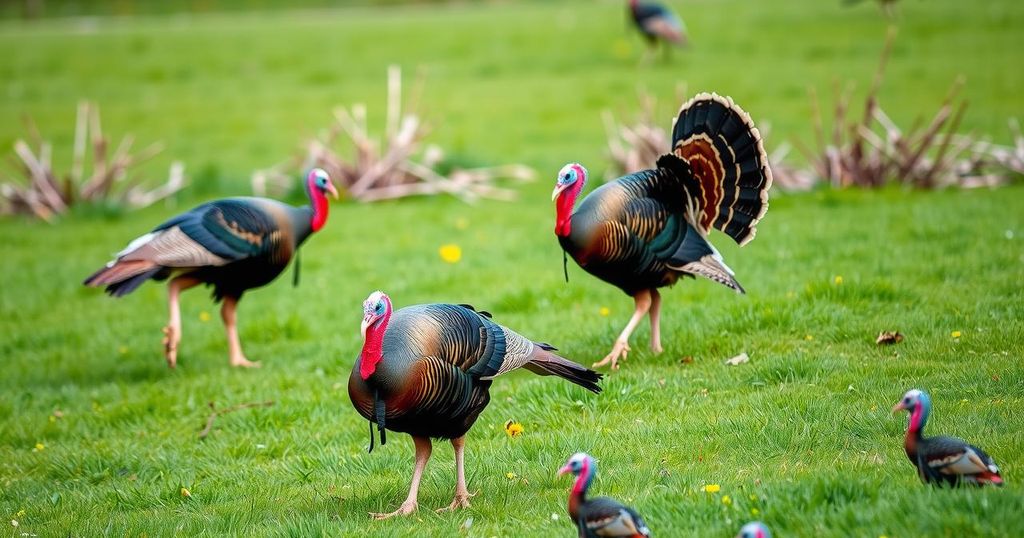Virginia Sees Decline in Turkey Harvest, Eastern Shore Reports Increases

Virginia’s turkey harvest in spring 2025 totaled 20,565, marking a 6% decline from 2024; however, Accomack and Northampton Counties reported increases. DWR attributes the decrease to lower juvenile recruitment in recent years. Despite concerns, officials believe turkey populations provide significant recreational opportunities, although habitat improvements are necessary for long-term success.
The Virginia Department of Wildlife Resources (DWR) recently released figures showing a total harvest of 20,565 wild turkeys during the 2025 spring season. This marks the fourth-highest turkey harvest in the state’s history. Although there was an overall 6% decrease from 2024, Accomack and Northampton Counties experienced notable increases.
In Accomack County alone, hunters brought in 318 turkeys, which is up by 12% compared to last year and also surpasses the county’s three-year average by 10%. Northampton County reported a similar trend, with 86 turkeys harvested—a 16% increase from the previous season and a 12% rise over the three-year average. Despite the statewide decline, the harvest numbers remain historically high.
The DWR attributes the decrease in state turkey harvest primarily to lower recruitment rates of turkey broods over the past couple of years. Surveys conducted in 2022 and 2023 indicated below-average counts of juvenile turkeys, commonly known as poults, which are crucial for sustaining adult populations. This drop in juvenile numbers means fewer mature turkeys for hunters to pursue in the ongoing season. An interesting shift was also noted in juvenile gobblers—known as “jakes”—where their harvest share rose from 7% last year to 11% this year. This trend indicates a higher harvesting rate of younger birds, likely due to the decline in adult turkey populations.
Ryan Brown, the Executive Director of DWR, highlighted the resilience of Virginia’s turkey populations for recreation. He expressed confidence in the future of turkey hunting, saying that natural factors—like hatching patterns, weather changes, and food availability—play significant roles in these annual fluctuations. “Even with annual fluctuations based on the hatch, weather, and food conditions, turkey populations continue to provide great recreational opportunities across the Commonwealth,” Brown stated.
While overall numbers appear healthy in many regions, DWR has raised concerns over certain areas that do not meet the targets set forth in Virginia’s Wild Turkey Management Plan. The agency underlined that habitat improvements aimed at enhancing nesting and brood success will be vital to ensure the long-term viability and growth of turkey populations.
In summary, while Virginia’s statewide turkey harvest experienced a decline this year, certain areas like Accomack and Northampton Counties demonstrated growth in their turkey populations. The overall numbers point to an important trend influenced by juvenile recruitment issues over the last two years. Continued habitat management will be crucial in ensuring that turkey populations thrive in the future, despite natural variabilities.
Original Source: shoredailynews.com







